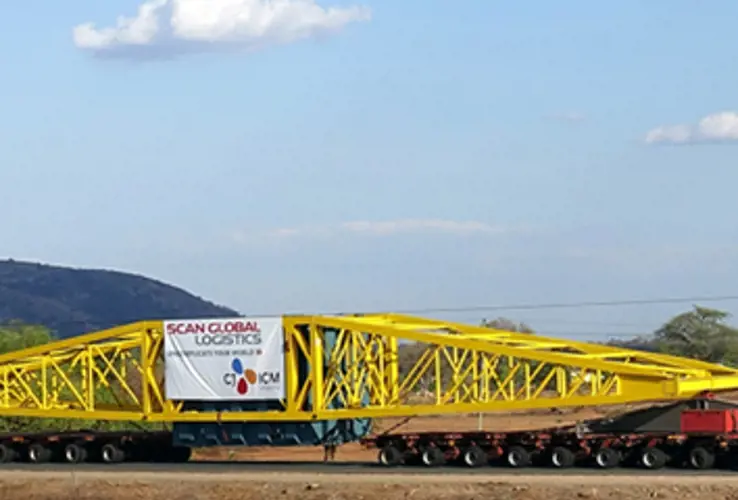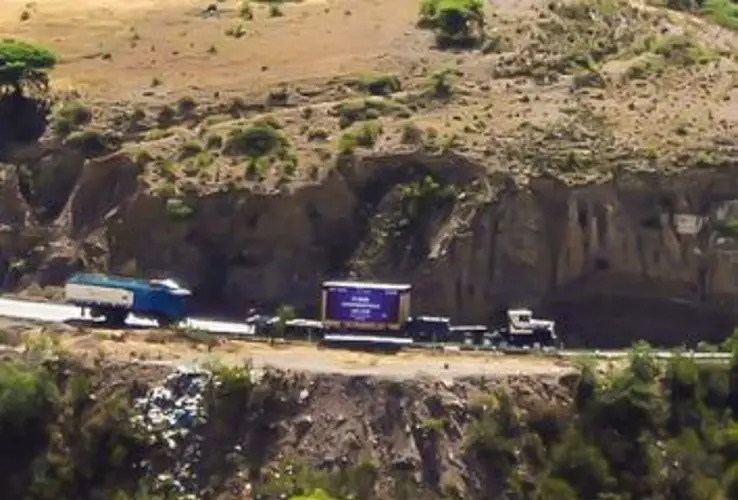
Delivering 28 transformers for a landmark HVDC project in the UAE

A global, multi-modal cargo puzzle
To execute the transport behind this landmark HVDC project, the customer turned to us to lead the logistics from end to end. Moving heavy-lift cargo at this scale takes more than capacity. It demands meticulous planning, engineering expertise, and precise coordination across borders and transport modes.
Here’s the scope of the project:
14 transformers from Sweden and 14 from Brazil, each weighing between 200 and 250 tonnes
Specialised cargo shipped from China, India, Sweden, and North Europe
Final delivery to four high-stakes project sites across the UAE: Two offshore, two onshore
To make the successful delivery happen, we designed and executed a carefully coordinated, multi-modal journey combining ocean freight, barge operations, and road transport – and the routing was every bit as complex as the cargo itself.

Breakdown of the routings
- From Sweden, the transformers travelled via ocean freight to Abu Dhabi, where they were stored at Mina Zayed Port for later delivery to the project sites
- Seven of the Brazil-origin transformers arrived through Mugharraq Port, continuing by road to the Shuweihat site
- The other seven transformers went to the Mina Zayed Port for trans-loading onto a barge, which moved them to the MBK Jetty in Mussafah Port. There, they were discharged and prepared for final delivery by truck to the Mirfa site
- The additional general and oversized cargo was routed through Jebel Ali Port from the four origin countries and delivered by road to the designated project locations
Planning for complexity, delivering through unpredictability
Together with our trusted partner CJ ICM, we managed every detail – from route engineering and permit coordination to local supervision in the UAE. Each move was backed by in-house engineering expertise and executed under strict safety protocols.
Yet, even the best-laid plans were put to the test. The escalation of the Red Sea crisis forced major reroutings via the Cape of Good Hope, significantly impacting transit times and capacity. Meanwhile, flooding in Dubai and Abu Dhabi damaged roads and ports, halting operations. Extreme heat, sandstorms, and infrastructure shutdowns added further disruption.
Recalibrating in real time
Throughout the disruptions, we responded with agility by adapting quickly and transparently. Shipments were re-sequenced, new barge and road options were mapped, and road and civil permits were secured as the situation evolved. Despite the setbacks, no critical deadlines were missed.
The success of this project wasn’t just a matter of logistics expertise. It was driven by proactive communication, seamless coordination across time zones, and shared commitment between all partners. Constant alignment with the customer ensured every shift in the plan was met with confidence and clarity.
Successful on-time delivery against all odds
Ultimately, all 28 transformers and additional cargo were safely delivered to their destinations. For our customer, it marked the successful completion of their first project of its kind in the Middle East and the launch of the region’s most powerful power-from-shore HVDC network to date.
For us, it was another example of how we uncomplicate the complex and turn pressure into progress. Because even under the most challenging conditions, we always go the extra mile to keep cargo moving.
Challenge accepted. Problem solved.


Complicated project transport over the Andes and into Bolivia









